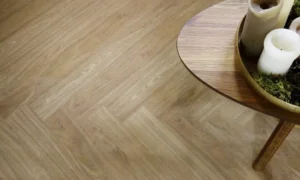Flooring has become a favorite in recent decades, bringing a timeless, classic and modern look to your home. From hardwood flooring to solid wood laminate flooring, you have many factors to consider when making your choice. You need to understand the pros and cons of each option and how they can meet your unique needs.
Bamboo flooring is one of the best faux wood flooring options. Bamboo flooring is a favorite among architects and many homeowners for its sleek, stylish design and timeless finish. But is it really the smartest flooring choice? What are the pros and cons of bamboo flooring
What is bamboo flooring?
Bamboo flooring is only a few decades old. It is very similar to other solid wood flooring products, but the manufacturing process is very different.
Raw bamboo grass is boiled and steamed to remove the starch and sugar from the natural plant. It is then dried. Hundreds of dried bamboo fibers are sliced, shredded, woven and pressed into flooring material. These fibers are then pressed into flooring using resin, glue and heat. Finally, solid bamboo panels or bamboo surface bamboo panels are made.
Types of Bamboo Flooring
Transverse – wood knots are clearly visible.
Sawn – the grain of the wood is clearly visible. …… Sawn – has a vertical grain (masame).
Bamboo – woven fibers of grass. The most expensive and hardest bamboo flooring.
Most bamboo flooring is a light amber or golden color. Bamboo flooring will darken due to carbonization. This makes bamboo flooring softer than natural bamboo.
Bamboo flooring is usually fastened to the subfloor with nails or glue.
Advantages and Disadvantages of Bamboo Flooring
Advantages of bamboo flooring
Strength and Durability – Quality bamboo flooring is dense and hard. As a result, bamboo flooring is very strong, structurally stable and hard, and can last up to 50 years with careful maintenance. Termite Resistant. It is also termite resistant and has a service life of up to 25 years under normal use at home.
Environmentally Friendly – One of the most attractive aspects of bamboo flooring is its environmental friendliness and sustainability. Bamboo grows quickly and regenerates quickly (harvested every five to six years). Most bamboo is grown in an environmentally friendly way. Using bamboo flooring does not put pressure on other tree species. (However, the cost of transportation from overseas adds to the carbon footprint of bamboo flooring).
Aesthetically pleasing – clean, modern look.
Easy to clean – if processed properly. (Not all bamboo flooring is the same! Bamboo flooring may also need restoration.
Disadvantages of bamboo flooring
Uniform appearance – Unlike faux wood or hardwood flooring, bamboo flooring has a unique grain pattern that is very uniform. While wood and faux wood floors are unique, bamboo floors are common.
Knotting – Unique knotting is a common feature of this type of flooring, especially in horizontal bamboo. The knots are the nodes or annual rings of the bamboo. Many people find it difficult to see this feature on their floors.
Health effects – Most bamboo flooring is produced overseas. The manufacturing process is rarely monitored and some bamboo flooring contains formaldehyde and other binders that release toxic volatile organic compounds (VOC).
Easily damaged:
Unless untreated bamboo is boiled or steamed and completely dried, it will shrink after installation. This can cause gaps and cracks to form.
Bamboo tends to absorb moisture. As a result, the floor is susceptible to moisture, water damage, shrinkage, warping, swelling and sagging.
Bamboo flooring is cheaper or darker in color and prone to dents and scratches.
Over time, bamboo can fade, damage and discolor.
Cost – The cost of bamboo flooring is comparable to most hardwoods. In most cases, bamboo flooring is imported, so there are transportation costs involved as well.
Not all bamboo is “green”. Some manufacturers harvest bamboo that is too soft or use toxic glues that compromise the sustainability of the product.
There is no better option than bamboo flooring.
Bamboo flooring appeals to buyers looking for natural and renewable flooring.
While bamboo flooring may be a good choice for some homes, if you’re looking for durable, quality, eco-friendly, stylish and affordable flooring, we recommend that you choose quality hardwood, wood flooring.



































